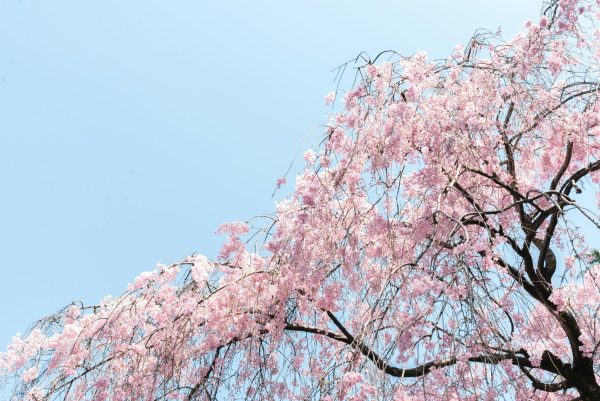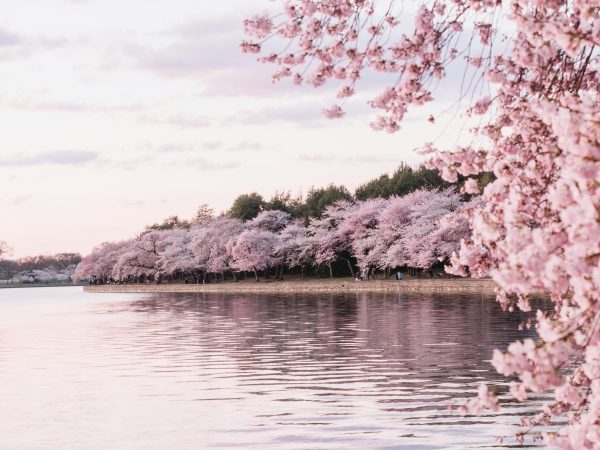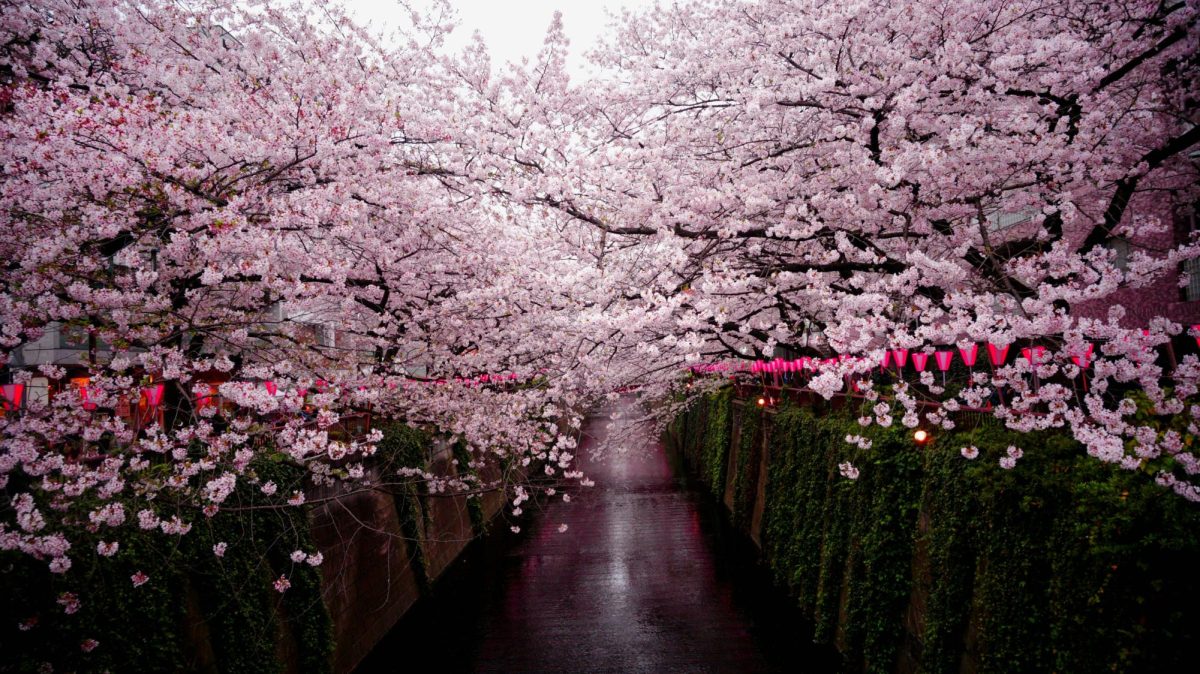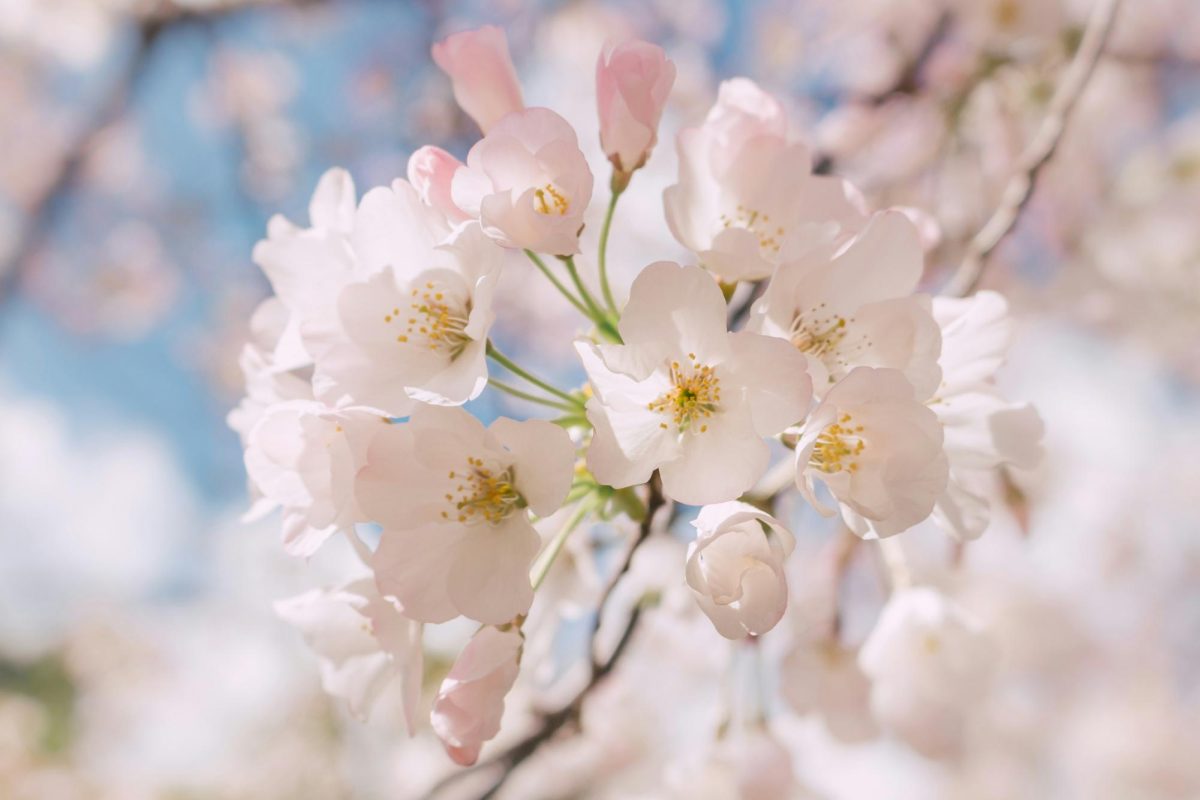The pink and white petals float on the surface of the water, after they have flowed down like rain. From humans appreciating the beauty of the falling petals to the use of them for motivations of war, cherry blossoms have symbolized the start of new life and a new start. For over a thousand years, cherry blossoms have signaled the start of spring and the revival of life.
Cherry blossoms, or sakura, are the flowers of the trees in Prunus, subgenus Cerasus. The name ‘cherry blossom’ usually refers to the ornamental variant, or cultivars, of Prunus Serrulata. Wild species of cherry trees are found predominantly in the Northern Hemisphere and particularly in East Asia.
The classification of cherry trees can get complicated. They are very prone to mutations, which has led to many unique flowers and characteristics. As a result there are over 300 species of the tree and many different classifications.
In Japan, ornamental cherry blossoms were classified in the genus Prunus, as in Europe and North America, but after a 1992 paper released by Hideaki Ohba of the University of Tokyo, the genus Cerasus became more common. This means that plants like Prunus Incisa are now referred to as Cerasus Incisa.
Cherry blossoms are the national flower of Japan and have, as a result, birthed many different Japanese traditions. One of these traditions is “Hanami,” the centuries-old practice of holding feasts or parties under blooming sakura (桜 or 櫻; さくら or サクラ) or ume (梅; うめ) trees.
Throughout many different time periods, the Japanese culture of viewing the flowers has grown, and the types of cherry blossoms have proliferated.
The Nara Period is the known start of the flower viewing custom, though originally it began with ume (Japanese Plum) trees.
During the Heian Period, sakuras gained traction, and the term “Hanami” became synonymous with cherry blossoms. From this point onwards in both Waka and Haiku, “flower” (花, hana) meant “cherry blossoms,” as implied in one of Izumi Shikibu’s – description – poems.
During this time, we have the first ever mention of the “weeping cherry” (しだり櫻; 糸櫻), one of the cultivars with pendulous (hanging) branches, Prunus itosakura ‘Pendula’ (Sidare-zakura), also known as the oldest cultivar in Japan.
With the population increase in the southern Kanto Region, the Oshima cherry originating from Izu Oshima Island was brought over to Honshu and cultivated there until its eventual transportation to Kyoto.
Muromachi Period (1336 – 1573)
The Sato-zakura Group (Prunus Serrulata), or Cerasus Sato-zakura Group, made its first appearance. This cultivar was one of the first of what is referred to as a “modern cherry blossom” and is one of the most common flowers.

The various double-flowered cultivars were produced and planted near banks of rivers, Buddhist temples, Shinto shrines, and daimyo gardens in urban areas like Edo (former name of Tokyo). Included was the mention of over 200 varieties of cherry blossoms that prospered.
The Yoshino cherry was distributed all throughout Japan and became the main object of hanami.
In 1894, Sasaki Nobutsuna composed the poem Shina seibatsu no uta (The Song of the Conquest of the Chinese), which compared the falling cherry blossoms to the sacrifice of the Japanese soldiers in the First Sino-Japanese War.
The Sakurakai (Cherry Blossom Society) was a ultranationalist secret society established by young officers within the Imperial Japanese Army in September 1930 with the goal of reorganizing the state along totalitarian militarist lines via a military coup d’état
In the Imperial Japanese Army, the government popularized the proverb “hana wa sakuragi, hito wa bushi” (“the best blossom is the cherry blossom, the best man is a warrior”) to increase morale.
Arguments made during discussion of plans for the Battle of Leyte Gulf, involved all Japanese ships and the dangers that would expose Japan to danger if they failed. These arguments were countered with the plea that the Navy be permitted to “bloom as flowers of death.”
The first kamikaze unit had a subunit called Yamazakura (wild cherry blossoms), painted cherry blossoms on the sides of their aircraft, and even brought branches of the tree with them on their one way voyage. The painted blossoms symbolized the intensity and the fleeting nature of life. The government urged the people to believe that the souls of downed warriors were reincarnated in the blossoms.
Symbolisms Outside of Warfare
From the blooms of flowers and life to the blooms of flowers of death, the sakura has a long history of symbolism. Cherry blossoms are a common topic in much of Japanese media including poetry, art, manga, anime, and films. They are also commonly used to mark the beginning of the new semester in school for countries like Japan and Korea as the blooming season coincides with a new school semester. Additionally, they can be found on the 100 yen coin, as well as dishware and clothing like kimonos.
In Shinto shrines, the cherry blossom symbolizes ephemerality of life, which is embedded in mono no aware (物の哀れ) (the pathos of things). The most prominent meanings of the flowers are beauty, purity, the cycle of life, and love.

You can view these beautiful flowers in their native countries, as well as Washington D.C. Every year from March 20th to April 14th the National Cherry Blossom Festival is held here. For more information about how the blossoms made their way to the U.S. Capital, Washington DC, read this article in The Science Survey.
One fun fact about cherry blossoms is that the cultivar Prunus Itosakura has some of the oldest living cherry blossoms in existence: the 2000 year old Jindai-zakura, the 1500 year old Uzumi-zakura, and the 1000 year old Daigo-zakura.
They are also used in cooking by pickling the blossoms, as well as making tea (Sakurayu). They contain coumarin, which is considered hepatotoxic (a liver damage inducing chemical). Despite the toxicity, coumarin has a desirable vanilla scent, and preparations done before culinary use reduces the coumarin levels to acceptable levels. However, the seed and bark of the trees contain a poisonous substance called amygdalin and thus should not be consumed.
Although the cherry blossoms have made their way from Asia to the U.S. and other countries, most of their history and usages are from Japan. Cherry blossoms are beautiful flowers that bloom near the end of winter signaling the start of spring. No matter how old the history of the flowers are, they continue to be like a breath of fresh air whenever they come into view.
Cherry blossoms are beautiful flowers that bloom near the end of winter signaling the start of spring. No matter how old the history of the flowers are, they continue to be like a breath of fresh air whenever they come into view.


